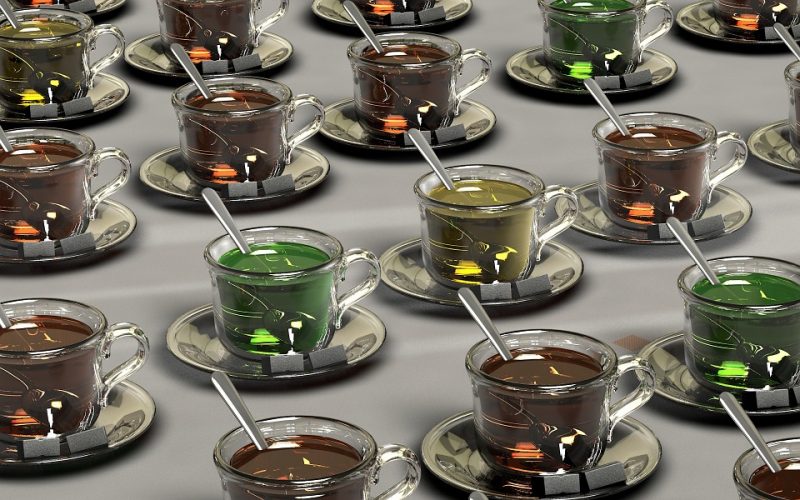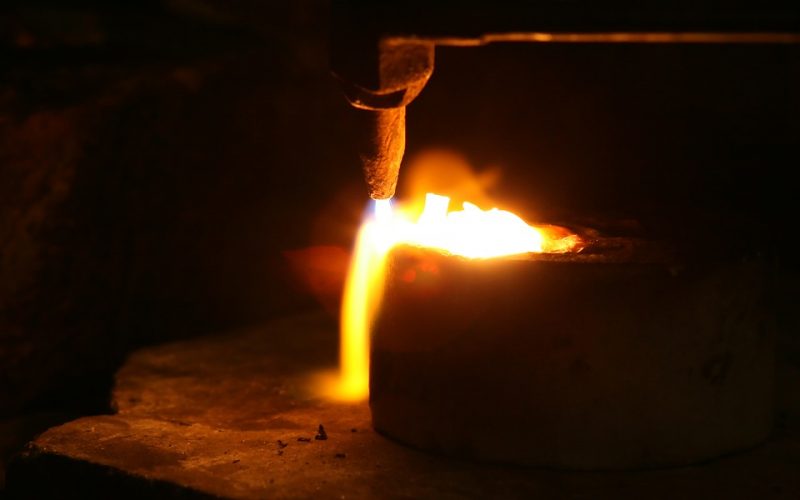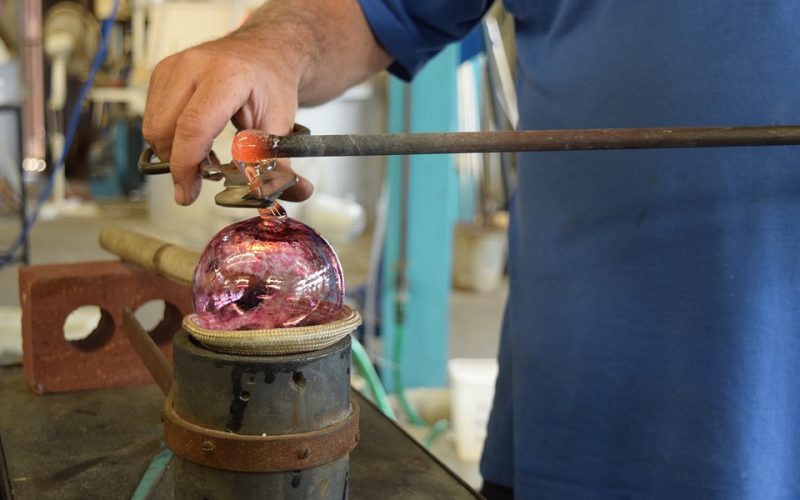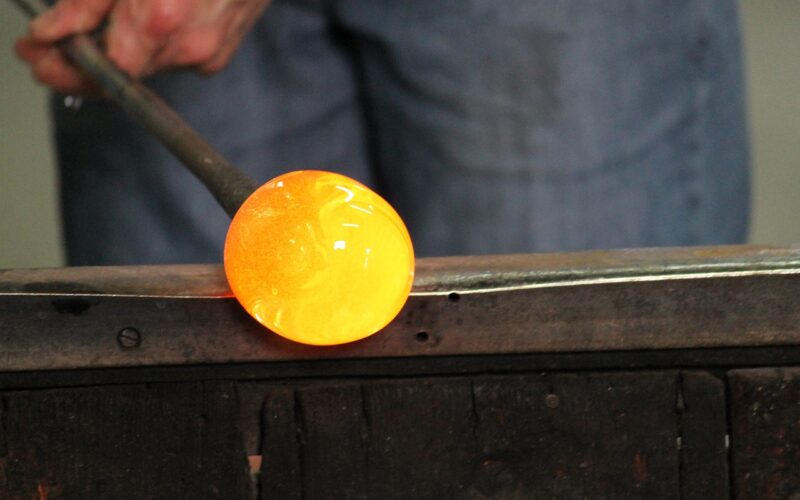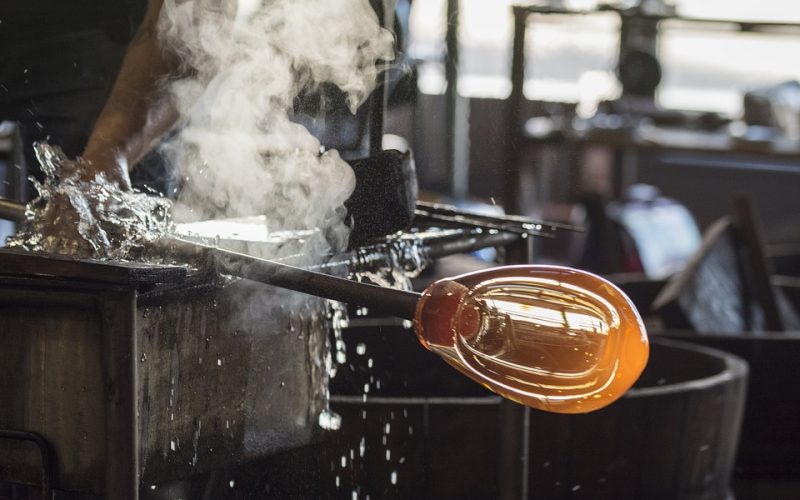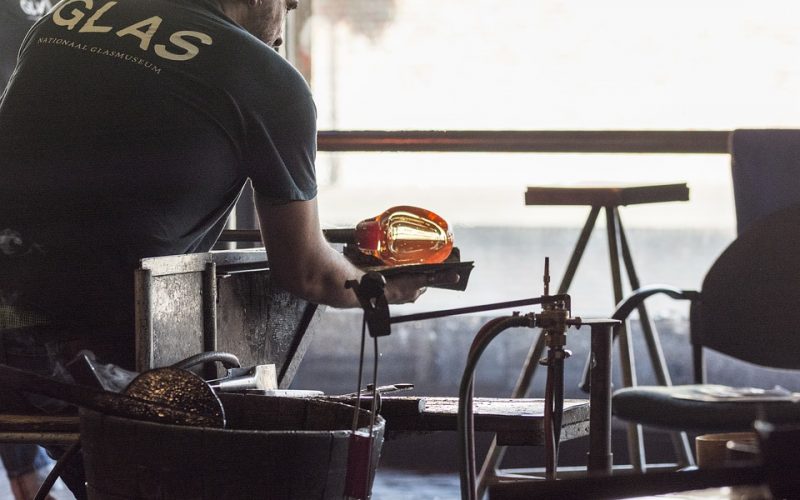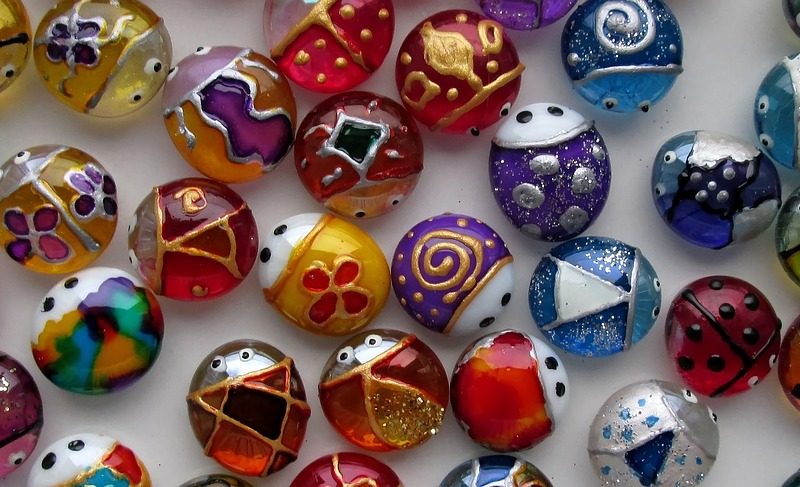Glass is a product made of heated sand with soda ash and limestone. These three ingredients are the basic components to make a mix that produces clear glass. This type of mix is used for large industrial batches of glass and for those who make smaller pieces by hand. Each ingredient has a defined purpose in the making of glass, and they are combined in different amounts for different products. Making a batch of clear glass for an art object is not quite the same as a large batch of glass for windows. Other ingredients, including recycled glass, are added to produce many different types of glass.
The soda ash component of the mix drops the temperature at which the sand melts. This is a cost savings for the maker because sand with soda ash melts at approximately 3000 degrees Fahrenheit. Without this additional component, the temperature must be approximately 1000 degrees higher.
The limestone component added to the mixture is used to stabilize the glass. It increases the hardness of the final product so it will be durable. Glass made without limestone is pliable but easy to break, and it will not harden over time. It will also melt in water if a limestone component is not added to the mix.
There are many different types of sand that might be used in the manufacturing of glass. Silica sand is widely used because it is mined in bulk and has few impurities. Pureness of the silica sand is important when making glass because the impurities affect the final product. They can change the tint or color of the glass as well as the strength of it. Glass makers generally prefer to start with a clear mix and add their own ingredients to make the glass change to the color and strength they desire.
